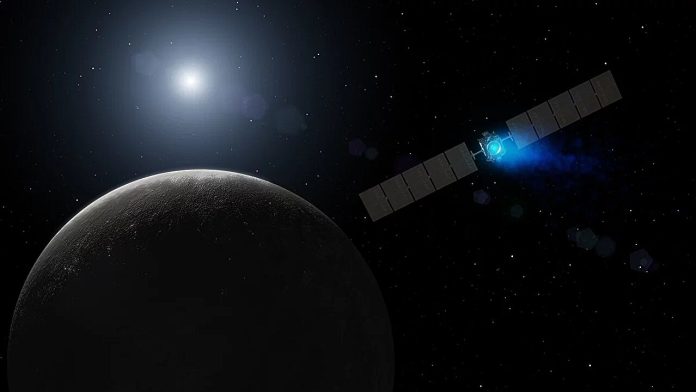
Ceres, the largest object in the asteroid belt between Mars and Jupiter, has long puzzled scientists about its origins.
With a diameter of almost 1,000 kilometers, Ceres stands out due to its complex geology, quite different from other simpler objects in the belt.
For years, researchers debated whether Ceres formed in its current location or migrated inward from the outer edges of the solar system.
Now, new findings from a team at the Max Planck Institute for Solar System Research may offer some answers.
The team studied ammonium-rich deposits in the Consus crater on Ceres, using data collected by NASA’s Dawn space probe, which orbited and studied the dwarf planet between 2015 and 2018.
Their discoveries suggest that Ceres may have formed in the asteroid belt rather than migrating from the outer solar system, as previously thought.
Ammonium’s Role in Ceres’ Formation
Ammonium, a compound related to ammonia, is typically stable only in the cold regions of the outer solar system.
Past research showed widespread ammonium deposits on Ceres’ surface, leading some scientists to believe that the dwarf planet must have originated far from the Sun, where temperatures are colder, and later moved inward to the asteroid belt.
However, the new research from the Consus crater challenges this idea. The scientists discovered ammonium-rich material near the surface of the crater, which likely came from deeper layers inside Ceres.
This finding suggests that ammonium was present in the planet’s building blocks from the start and that it didn’t necessarily have to come from the outer solar system.
Unique Cryovolcanism on Ceres
Ceres is home to a special type of volcanic activity called cryovolcanism, where instead of molten rock, freezing liquids such as brine seep up from inside the planet.
This process has likely been happening for billions of years. The ammonium-rich material in the Consus crater appears to be remnants of such a brine, which made its way to the surface from a liquid layer deep inside Ceres, beneath its crust.
The researchers found bright yellowish deposits in the crater that are rich in ammonium, indicating that this material has been slowly pushed to the surface over time. The ammonium may have been trapped in the dwarf planet’s crust like a sponge, seeping upward due to cryovolcanic activity. This process suggests that the ammonium didn’t have to come from an outer solar system origin but could have formed within Ceres in the asteroid belt.
A Crater with a Story to Tell
Consus Crater, located in Ceres’ southern hemisphere, is not one of the largest craters on the dwarf planet, but it holds valuable information about Ceres’ history. The crater has a diameter of 64 kilometers and features a smaller, inner crater on its floor. The bright ammonium-rich deposits are found around this smaller crater, and their presence provides clues about Ceres’ interior processes over billions of years.
Researchers believe the smaller crater was formed by an impact just 280 million years ago. This impact may have exposed material from deep within Ceres, bringing ammonium to the surface. Consus Crater, although relatively young at 450 million years old, gives scientists a glimpse into Ceres’ ancient past and how its interior has evolved over time.
A Native of the Asteroid Belt?
The new research suggests that Ceres may be native to the asteroid belt after all. The ammonium found in the Consus crater likely came from deep within the planet rather than being introduced from elsewhere in the solar system. This finding is significant because it challenges previous assumptions and opens up new possibilities for understanding Ceres’ origins.
Dr. Andreas Nathues, the study’s lead author, notes that Ceres’ crust may have absorbed ammonium over billions of years, and the material found in the crater is a key piece of evidence supporting the idea that Ceres could have formed where it currently resides. The study provides a fascinating window into the history and formation of one of the most intriguing objects in our solar system.



